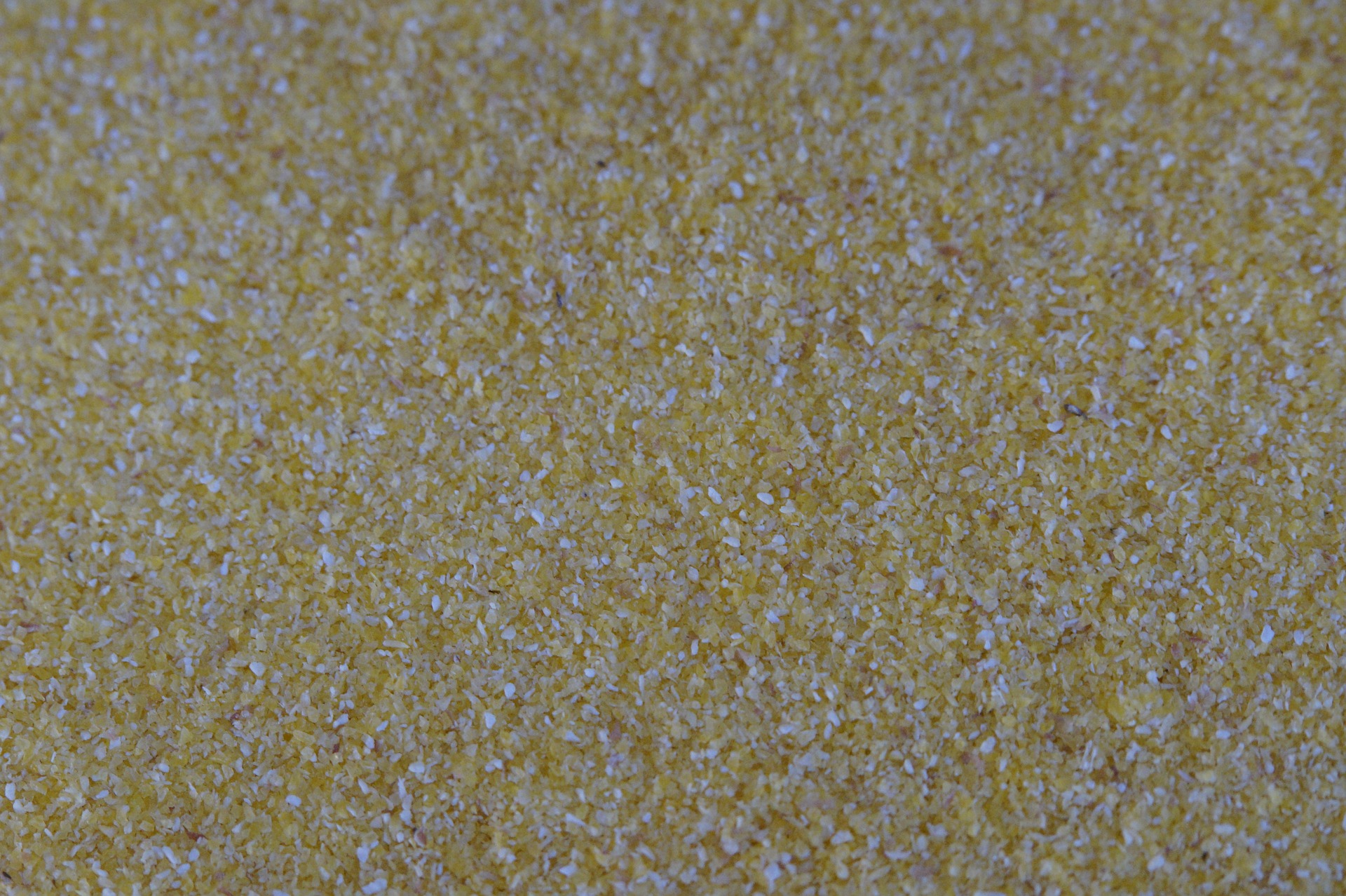They both fall under the cornmeal umbrella – what’s the difference between grits and polenta?
- Grits: coarsely ground hominy, boiled and sometimes then fried, eaten as a breakfast dish or as a side dish with meats; grain hulled and coarsely ground.
- Polenta: a thick mush of cornmeal.
Let’s start with cornmeal, the base of both our food items. Cornmeal is finely dried corn. It is more coarse than wheat flour, and it’s both slightly grainy and slightly powdery.
Grits, as mentioned in the definition, are made from ground hominy. Hominy, also known as dent corn, is corn that has been treated with lime or a similar alkaline product to remove the hull. This form of corn consists of a soft starch, resulting in a creamy consistency.
Grits are available in stone ground or instant. Stone ground includes the germ and its subsequent nutrients, and has a longer cooking time; instant has already been partially cooked, and has reduced nutrients.
Polenta is also found in two forms as well: dry or cooked. Dry polenta has a creamy consistency, not unlike grits. Cooked polenta is usually in a tube that can then be sliced, fried, grilled, etc.
While grits are made from hominy, polenta derives from flint corn. Flint has a harder starch center, resulting in a more granular texture after cooking than grits. Polenta can be served hot like grits, or it can be cooled and then sliced.
Grits and polenta have an interesting cultural difference, as well.
Grits, of course, are a staple food item from the South, connoting family and togetherness. Polenta derives from Italy – Northern Italy, specifically – and is associated with extreme poverty. Southern Italians (pasta-eaters) reportedly think of the polenta-consuming Northerners as country bumpkins.
Ironically, polenta is developing a somewhat prestigious reputation here in the States. Grits, however, go largely unnoticed unless you live where “y’all” is a common saying.
To recap: Grits hail from the Southern United States, are made from soft-starch hominy corn, and are eaten as a creamy cornmeal mush.
Polenta comes from Northern Italy, is made from hard-starch flint corn, and can be cooled and sliced instead of eaten in mush-form. When in its softer stage, polenta is grittier than grits. (Ha.)
By the way, cream of wheat is made from ground wheat instead of ground corn, and it’s creamier than grits or polenta.

Comments
2 responses to “Difference between: grits and polenta”
Great info thanks for sharing
Bravo!Felicitari ptr tot ceace faci.
http://ilikeubuturcrazy.tumblr.com/